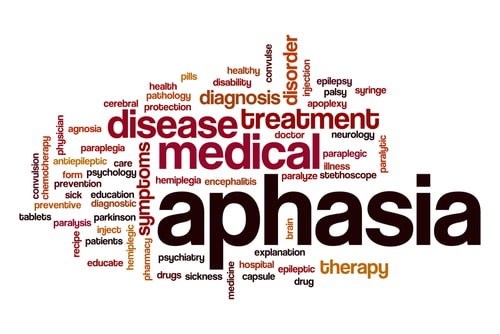 Aphasia disorder is communication dysfunction It is characterizing by a complete or partial impairment of language comprehension, formulation, and use. Aphasia is often a result of a stroke. It may also be a result from traumatic brain injury, brain tumors or brain infection. It can also be a symptom of a neurological disorder.
Aphasia disorder is communication dysfunction It is characterizing by a complete or partial impairment of language comprehension, formulation, and use. Aphasia is often a result of a stroke. It may also be a result from traumatic brain injury, brain tumors or brain infection. It can also be a symptom of a neurological disorder.
Signs of Aphasia Disorder:
- difficulty using or understanding words
- trouble understanding speech
- problems reading or writing
- trouble using numbers
Three main types of Aphasia Disorder
- Nonfluent: Difficulty speaking, writing, and finding word. Language and reading comprehension are often fairly unharmed.
- Fluent: Poor language comprehension. While speech is fluent, it often makes no sense and consists of jargon and made-up words.
- Global: Severe impairments in both language comprehension and speech production.
Treatment
Treatment of aphasia disorder should begin as soon as possible. It includes particular needs and often depends on individual. Speech and language therapy focuses on relearning language skills and involves extensive exercises. They include reading, writing, following directions, and repeating what they heard in order to facilitate expression of thoughts and ideas. Family participation in rehabilitation process is essential for achieving better results. .
Intensity of treatment
Intensity of aphasia disorder treatment should be individualized based on the recency of stroke, therapy goals, and other patient-specific characteristics such as age, size of lesion, overall health status, and motivation. Each individual reacts differently to treatment intensity and is able to tolerate treatment at different times post-stroke. Some patients cannot tolerate therapy directly after a stroke due to confusion or exhaustion, but may tolerate therapy better later. For many individuals with aphasia disorder, intensive treatment may not be appropriate or accessible because of individual factors that interfere with the intensive therapy delivery model. Intensity of aphasia disorder treatment after a stroke should be dependent on the patient’s motivation, stamina, and tolerance for therapy.
